Press Release
|
|
|
|
|
|
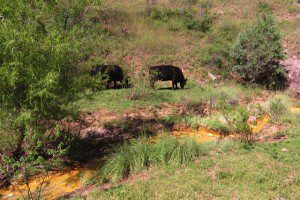
FOR IMMEDIATE RELEASE
Patagonia, Arizona – Yesterday, the Southwestern Regional Office of the US Forest Service issued an Action Memo for “Time Critical” clean up of the abandoned Lead Queen mine in the Patagonia Mountains on the Coronado National Forest, approximately 6 miles south of the town of Patagonia, Arizona.
Members of the Patagonia Area Resource Alliance (PARA) discovered the abandoned mine over-flowing with toxic, orange sludge into a tributary of Harshaw Creek, last September. PARA documented the spill and notified authorities. The Harshaw Creek tributary eventually flows into the Town of Patagonia, Sonoita Creek and Patagonia Lake.
As the land owners of the Lead Queen mine, the Forest Service was issued two Notice of Violations from the Arizona Department of Environmental Quality: “Addition of a pollutant to navigable waters from a point source without a permit,” and “Discharge of storm water associated with an industrial activity without a permit.”
 Test results showed off-the-chart concentrations of lead and arsenic in water, soil and waste rock samples at the Lead Queen site. High concentrations of zinc, copper and aluminum were also found. All of these heavy metals are listed as “hazardous substances” and can cause serious – or even deadly – health issues. The red-orange color of the sludge was due to extreme concentrations of iron.
Test results showed off-the-chart concentrations of lead and arsenic in water, soil and waste rock samples at the Lead Queen site. High concentrations of zinc, copper and aluminum were also found. All of these heavy metals are listed as “hazardous substances” and can cause serious – or even deadly – health issues. The red-orange color of the sludge was due to extreme concentrations of iron.
The USFS document stated the clean up aims to reduce potential exposure of the hazardous heavy metals to “human populations, animals or the food chain.”
“This is a good start, but I’ve seen many more abandoned mines in the Patagonia Mountains that also need to be cleaned up. The mining industry has a well-earned reputation for just walking away from mines when they’re done.” Gooch Goodwin, native Patagonian and PARA board member.
 The Forest Service document also acknowledges that the “Patagonia Mountains have high levels of biodiversity and are home to a variety of species protected under the Endangered Species Act including jaguar, ocelot, lesser long-nosed bat, Mexican spotted owl, western yellow-billed cuckoo, Sonora tiger salamander, and the northern Mexican gartersnake.”
The Forest Service document also acknowledges that the “Patagonia Mountains have high levels of biodiversity and are home to a variety of species protected under the Endangered Species Act including jaguar, ocelot, lesser long-nosed bat, Mexican spotted owl, western yellow-billed cuckoo, Sonora tiger salamander, and the northern Mexican gartersnake.”
It additionally states, “the area is best-known and most popular places for birding in the U.S. Bird enthusiast who come from all over the world to catch a glimpse of more than 300 species of birds, including many Neotropical species that migrate, nest, and live in this unique habitat.”
Clean up of the five acre site is expected to start Spring 2015 and be completed before the coming monsoon season to avoid erosion and flushing of heavy metals further downstream.
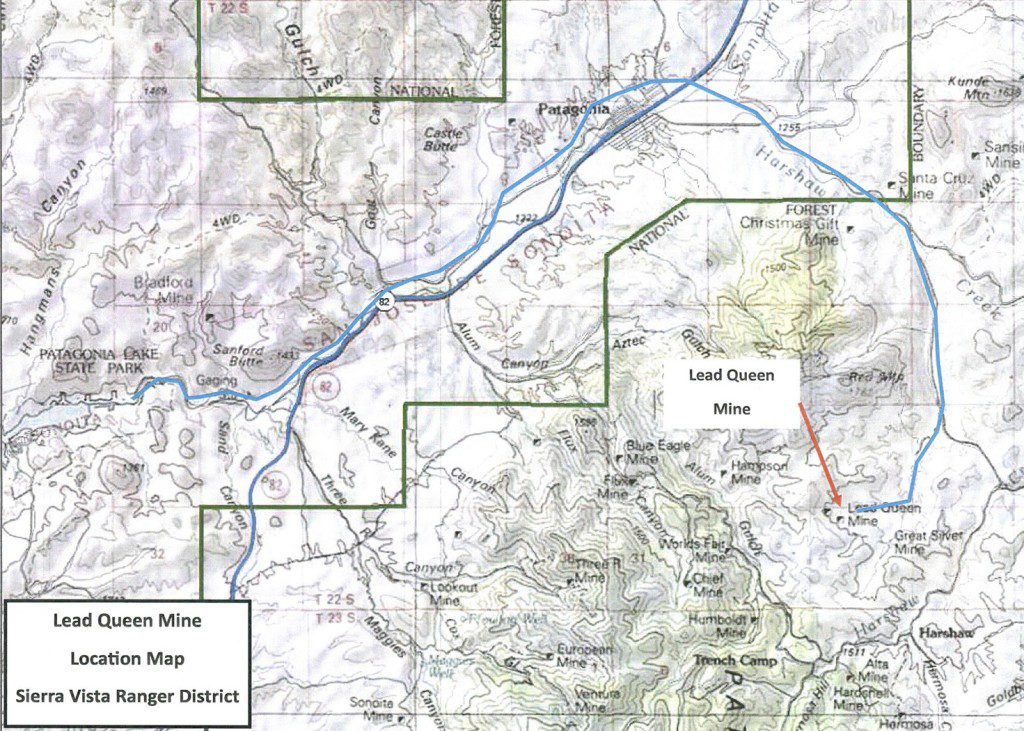
USFS map of Lead Queen mine location
Read USFS Lead Queen Mine Removal Action Memorandum
For further information regarding the USFS Removal Action Memorandum, please contact Eli Curiel, P.E., On-Scene Coordinator, at 520-388-8413; or Maria McGaha, P.E., Regional Environmental Engineer, at 505-842-3837.
###
The Patagonia Area Resource Alliance is a citizen watchdog organization that monitors the activities of mining companies, as well as ensures government agencies’ due diligence, to make sure their actions have long-term, sustainable benefits to our public lands, our water, and the town of Patagonia. For more information visit www.patagoniaalliance.org and follow us on Twitter @PARAalliance.

FOR IMMEDIATE RELEASE
Tucson, Ariz. — Today the U.S. Forest Service temporarily put the brakes on an environmentally hazardous mining project in southern Arizona’s Coronado National Forest that it previously approved in August. The Forest Service’s decision follows a similar move by the U.S. Fish and Wildlife Service, which had originally given the project the green light in August and then withdrew its approval in December. The agency decisions to withdraw their approvals of the Canadian mining company Regal Resources’ “Sunnyside Project” are based on the project’s potential violation of multiple environmental laws.

photo by Nathan Rupert
“The agencies knew from the beginning that this project could have a devastating impact on the local wildlife and habitat in this unique corner of the country,” said Rob Peters of Defenders of Wildlife. “The Coronado is home to an incredible diversity of imperiled species like the jaguar, ocelot and yellow-billed cuckoo, all which are already at risk from multiple projects in the region.”
“No one understood why they approved this project to begin with, but for the sake of Patagonia’s residents and wildlife, we are glad to see that they’ve reconsidered,” added Peters.
In October conservation groups Defenders of Wildlife and the Patagonia Area Resource Alliance filed a lawsuit claiming the federal agencies’ approvals the Sunnyside project violated environmental laws and posed a threat to endangered species and the safety of drinking water for local residents.
“Sunnyside could have been a disaster not only for our region’s unique wildlife, but also for the residents living directly downstream and the municipal watershed of the town of Patagonia,” said Wendy Russell of the Patagonia Area Resource Alliance. “Projects like Sunnyside use and abuse a tremendous amount of the local water supply and create long-term destruction of wildlife habitat. The people and wildlife of our national forests deserve more, and the agencies know that.”
Click to hear from environmental attorneys on why they sue.
###
Contact: Courtney Sexton, csexton@defenders.org, 202-772-0253
Wendy Russell, wendy@patagoniaalliance.org, 520-477-2308
Defenders of Wildlife is dedicated to the protection of all native animals and plants in their natural communities. With more than 1.1 million members and activists, Defenders of Wildlife is a leading advocate for innovative solutions to safeguard our wildlife heritage for generations to come. For more information, visit www.defenders.org and follow us on Twitter @DefendersNews.
The Patagonia Area Resource Alliance is a citizen watchdog organization that monitors the activities of mining companies, as well as ensures government agencies’ due diligence, to make sure their actions have long-term, sustainable benefits to our public lands, our water, and the town of Patagonia. For more information visit www.patagoniaalliance.org and follow us on Twitter @PARAalliance.

It’s hard to believe that the end of the year is nearly upon us! When 2014 began, your friends, neighbors and colleagues here at the Patagonia Area Resource Alliance (PARA) were gearing up for a busy year promoting the incredible beauty, community, and natural heritage of the Town of Patagonia and the Patagonia Mountains. Little did we know what a whirlwind year it would be! The past eleven months have seemingly sped by while we have been advocating to protect this amazing place that we all treasure from the multiple threats that exploratory drilling and mining pose to our small community.
PARA was formed in 2011 to educate and engage the community about the risks and realities of mining, to promote local sustainable economies, to better understand our precious and imperiled natural resources such as clean water and wildlife, and to actively advocate for the protection of those resources in concert with Patagonia’s distinct and serene rural way of life.
You have helped us along the way this year! You have volunteered, come to public meetings, wrote letters, monitored wildlife, and participated in the NEPA process. Together, we have contributed over 2500 volunteer hours already in 2014!
It has been another amazing and transforming year for PARA, but we have so much more to do! PARA runs on a shoestring budget with the human power of an almost entirely volunteer workforce and our two person outreach team–budgeted for only 30 hours per week. We’d like to do so much more! Please consider making a donation to PARA this year to support and grow this critical work in our community.
Filed a complaint in federal court in October with Defenders of Wildlife against the Forest Service and the Fish and Wildlife Service for their unlawful approval of the Regal Resources Sunnyside mineral drilling project in southern Arizona’s Coronado National Forest, in the Alum Gulch area of the Patagonia Mountains. The Sunnyside project approval violates environmental laws and poses a potential threat to endangered species and the safety of drinking water for Patagonia area residents. The Coronado National Forest, Patagonia Mountains and waterways in our region support some of the world’s most imperiled wildlife, including jaguar, ocelot, lesser long-nosed bat, Mexican spotted owl, and yellow-billed cuckoo.
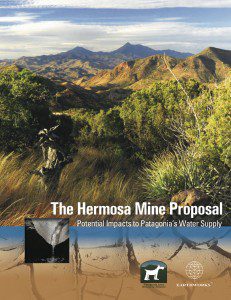 Educating the Community on Mining Risks
Educating the Community on Mining RisksReleased a peer-reviewed report with the national organization EARTHWORKS, “The Hermosa Mine: Potential Impacts to Patagonia’s Water Supply.” The report uses geologic and hydrologic studies from mine developer AZ Mining Inc (Wildcat Silver), the United States Geologic Survey, the Arizona Department of Water Resources, the Town of Patagonia, and others, as well as analyzes historic contamination issues caused by mining in the Patagonia Mountains. We conclude in our report that the seemingly inescapable realities of acid drainage and water consumption impacts pose too great a risk to Patagonia.
Coordinated and submitted NEPA comments on the USFS draft Environmental Assessment for the AZ Mining Inc (Wildcat Silver) Hermosa drilling project with Defenders of Wildlife, Arizona Mining Reform Coalition, Center for Biological Diversity, Earthworks, and Sky Island Alliance. Hosted a community workshop to empower residents to comment on the Hermosa EA comprising of an overview of the Hermosa proposal and its likely impacts; a NEPA presentation and how to comment on an EA by Jenny Neeley, Attorney at Law; and a presentation of area wildlife by Biologist, Sergio Avila, of Sky Island Alliance.
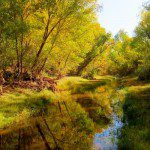
Sonoita Creek
Submitted comments regarding the proposed United States Forest Service Guidelines on Groundwater, advocating for groundwater protection and consideration of potential impacts regarding all agency activities in our National Forests, especially in regards to hardrock mining. Submitted comments to the Environmental Protection Agency regarding the proposed rule defining the “Waters of the U.S.” advocating for protection of ephemeral and intermittent streams. Submitted comments advocating for more designated critical habitat in the Patagonia Mountains for the threatened yellow-billed cuckoo.
To learn more about our 2014 accomplishments and efforts, please take a look at PARA’s “Report to the Community” available on our website at: www.patagoniaalliance.org/our-activities- outreach/
With continued legal assistance from Defenders of Wildlife, PARA strives to hold mining companies, the US Forest Service and all agencies accountable to follow the laws and regulations designed to protect our water, air, surrounding ecosystems and communities. We are positioned to respond to future exploratory mining proposals scheduled for the Patagonia Mountains.
Citizen scientists from the community continue wildlife monitoring efforts in the Patagonia Mountains focusing on areas immediately at risk by proposed mining activities. Data gathered is used to fight mining proposals through species lists, presence of vulnerable species and habitat analysis. Additional collaborations are ongoing with Defenders of Wildlife, EARTHWORKS, Sky Island Alliance and Tucson Audubon to ensure this data is applied to advocacy efforts in the most effective ways.
PARA is strategizing to expand community education activities to grow our base of support and empower concerned residents with potential actions to keep mining out of the Patagonia Mountains. We recognize the need to establish sustainable funding to maintain core functions and seek to expand funding sources. With our additional staff funding in the 2015 budget, we plan to sustain our two person team to continue to expand our outreach beyond our community boundaries. Our 2014 Financial Report is also available online: www.patagoniaalliance.org/our-activities-outreach/
PARA recognizes that the health and economic prosperity of our community are deeply connected to the well-being of the Patagonia Mountains and the Harshaw/Sonoita Creek watershed. They are the source of our drinking water, clean air and the centerpieces that drive our local economy.
There are many needs in our community and many compelling requests for support. We believe one of the most fundamental is protecting our drinking water and our community from the well-known detrimental effects of open pit mining. To that end, PARA is seeking to raise $19,000 by the end of 2014 to support the several ongoing and new initiatives outlined above as we move into 2015. We are fortunate to have a group of amazingly committed community members and generous donors supporting our work, but we are looking to broaden the base of support to ensure not only financial sustainability, but also the ability to impact local, regional and national decision-making on our own behalf.
That’s where you come in. The work necessary to make this vision of 2015 a reality is possible only because of your time and your financial support. Please make a gift today.
Recurring monthly donations can be made securely through PayPal.
Every single contribution makes a sizable difference to our organization and ultimately for our community. It is only because of the generous support from people like you that we can undertake this critical work. Thank you!
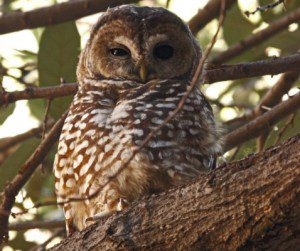
FOR IMMEDIATE RELEASE
October 29, 2014
Contact: Courtney Sexton, csexton@defenders.org, 202-772-0253
Wendy Russell, wendy@patagoniaalliance.org, 520-477-2308
TUCSON, ARIZ. – Defenders of Wildlife and the Patagonia Area Resource Alliance today asked a federal court to hold the United States Forest Service and United States Fish and Wildlife Service accountable for their unlawful approval of the “Sunnyside” mineral exploration drilling project in southern Arizona’s Coronado National Forest, in the Alum Gulch area of the Patagonia Mountains. The groups say the approval of the Canadian mining company Regal Resources’ Sunnyside Project violates environmental laws and poses a potential threat to endangered species and the safety of drinking water for local residents. The Sunnyside Project involves drilling multiple exploratory holes up to 6,500 feet deep in one of the most biologically diverse mountain ranges in Arizona. The extensive drilling and construction would run 24/7 for months on end, and the total project operations could last up to 3 years.
The Coronado National Forest, the Patagonia Mountains and the watersheds in this region support some of the world’s most imperiled wildlife, including the jaguar, ocelot, lesser long-nosed bat, Mexican spotted owl, and yellow-billed cuckoo. Of particular concern is the Mexican spotted owl “Protected Activity Center” (PAC) in the Alum Gulch area, a site which is supposed to have the greatest protection of the law. One of the project’s proposed drilling sites is only one-tenth of a mile from the “nesting core area” of this PAC.
“The potential damage from the Sunnyside Project, especially coupled with other damaging mining projects in the region, could have devastating impacts on this imperiled wildlife and the habitat they depend on, as well as the water supply for local residents,” said Rob Peters of Defenders of Wildlife. “This is a national forest and imperiled wildlife and their habitats on the forest should be protected— not polluted by expanded drilling operations.”

Ocelot, Leopardus pardalis. photo US FWS
Patagonia area residents are dependent on water originating from Alum Gulch, an area which is also designated as critical habitat for the jaguar and Mexican spotted owl. The imperiled ocelot, lesser long-nosed bat, and yellow-billed cuckoo have also been observed near the project area.
“The Sunnyside Project could have tremendous adverse impacts on local wildlife and local residents, affecting the floodplains and the municipal watershed of the town of Patagonia,” said Wendy Russell of the Patagonia Area Resource Alliance. “The drilling will require 12,500 gallons of water per day, an amount approximately equal to ten percent of the daily water usage of the Town of Patagonia. This project threatens not only endangered wildlife, but our community’s water, health and safety.”
Click to hear from environmental attorneys on why they sue.
###
Defenders of Wildlife is dedicated to the protection of all native animals and plants in their natural communities. With more than 1.1 million members and activists, Defenders of Wildlife is a leading advocate for innovative solutions to safeguard our wildlife heritage for generations to come. For more information, visit www.defenders.org and follow us on Twitter @DefendersNews.
The Patagonia Area Resource Alliance is a citizen watchdog organization that monitors the activities of mining companies, as well as ensures government agencies’ due diligence, to make sure their actions have long-term, sustainable benefits to our public lands, our water, and the town of Patagonia. For more information visit www.patagoniaalliance.org and follow us on Twitter @PARAalliance.
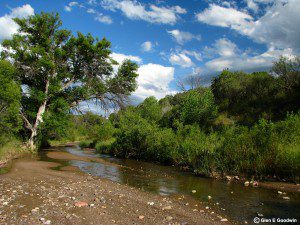
Patagonia Area Resource Alliance
Earthworks
October 28, 2014
 Patagonia – The Hermosa silver mine proposed inside Patagonia, Arizona’s Municipal Supply Watershed could deplete the town’s drinking water and perpetually contaminate area groundwater with acid mine drainage, according to a new peer-reviewed report.
Patagonia – The Hermosa silver mine proposed inside Patagonia, Arizona’s Municipal Supply Watershed could deplete the town’s drinking water and perpetually contaminate area groundwater with acid mine drainage, according to a new peer-reviewed report.
Reviewed* by a USGS scientist and released by the Patagonia Area Resource Alliance and Earthworks, the study also concludes that drinking water wells of surrounding residents are also threatened.
“A mine that threatens our town’s drinking water is a mine that shouldn’t be built,” said Wendy Russell of the Patagonia Area Resource Alliance. She continued, “In Arizona, water is more precious than silver, and especially so after more than a decade of drought.”
Proposed by Canadian exploration company AZ Mining Inc (Wildcat Silver) – a company with no experience operating a mine – Hermosa is proposed at a time when Patagonia is already concerned with dropping groundwater levels and increasing concern about future water supplies.
The 4,000 foot wide and 1,500 foot deep Hermosa silver and manganese mine would consume 670 million to 1.2 billion  gallons of groundwater per year – up to 53 times the amount of water the town uses today — to run the mine within the upper reaches of Harshaw Creek, a portion of Patagonia’s Municipal Supply Watershed. This water consumption will lower the recharge rates for the aquifer on which the town depends, and is also likely to produce acidic runoff, requiring ongoing treatment in perpetuity.
gallons of groundwater per year – up to 53 times the amount of water the town uses today — to run the mine within the upper reaches of Harshaw Creek, a portion of Patagonia’s Municipal Supply Watershed. This water consumption will lower the recharge rates for the aquifer on which the town depends, and is also likely to produce acidic runoff, requiring ongoing treatment in perpetuity.
“If the U.S. Forest Service were to permit the Hermosa mine, this report shows it would jeopardize our community’s drinking water. And for what? For foreign shareholders’ silver,” said Wendy Russell. She continued, “This is a mine proposal that just doesn’t make sense for our community who would actually have to live with it.”
The mine is proposed within the Coronado National Forest, and therefore subject to the 1872 Mining Law. Federal land managers interpret the 1872 Mining Law to require them to permit mines, no matter if the land is better used for other purposes – like protecting a town’s drinking water supply watershed.
“Because the Hermosa mine proposal threatens area water supplies, it obviously should not be permitted,” said report author Pete Dronkers of Earthworks. He continued, “That it’s being considered at all is a strong argument for reforming the 1872 Mining Law to allow the consideration of other potential land uses.”
The report also evaluates the nature of groundwater depletion that is likely under the proposed mine plan, characterizes the impacts of such, and also analyses other known adverse impacts, such as air pollution, endangered species, and other cumulative impacts.
The report, including an executive summary, can be found at: patagoniaalliance.org/report-hermosa-mine
Fact Sheet
Full Report
Contact:
Pete Dronkers, Earthworks
(775) 815-9936, pdronkers@earthworksaction.org
Wendy Russell, Patagonia Area Resource Alliance
(520) 477-2308, wendy@patagoniaalliance.org
* An earlier version of this press release indicated that a USGS scientist “endorsed” this report. We were informed by the United States Geological Survey that the agency only endorses their own reports and documents.
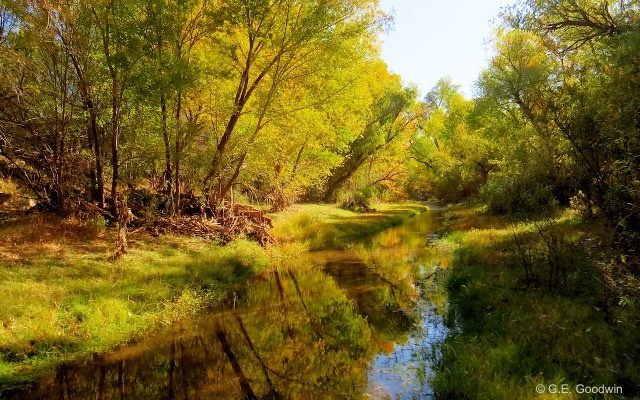
By Michael Stabile
Our municipal watershed is the only source of potable water for the Town of Patagonia and over 300 private well users within a three-mile radius of town. The recent article in the PRT about the drop in the town’s water table and the subsequent discussion of possible water rationing is a wake up call to all residents of Patagonia.
Water is taken for granted; we all just assume that we will be able to turn the tap and water will flow. Thirteen years of drought and climatologists’ model of drier years to come should affect the way we use this precious resource. We should all do our part to conserve water.
At a recent meeting of the town council it was decided to have a further discussion with town residents on cutting back on their water usage voluntarily. Where else might the Town Council look for water protection? How about opposing industrial mining impacts on the community water supply?
The Rosemont project is projected to use 6,000 acre feet of water per year. That’s almost two BILLION gallons of groundwater. The Sonoran Institute’s water study calculated that the effects of this drawdown of the water table could possibly be felt as far away as Patagonia and could in turn, have a great effect on the Sonoita creek drainage.

Sonoita Creek, part of the Patagonia Municipal Water Supply
The AZ Mining Inc (Wildcat Silver) Hermosa project is located in the headwaters of the Harshaw creek drainage. When AZ Mining Inc / Wildcat Silver’s first Preliminary Economic Assessment was issued for investors, the project covered about 3,000 acres. The project has since grown to 13,666 acres, and the open pit has expanded by at least 30%, according to AZ Mining Inc / Wildcat Silver’s Pre-Feasibility Study released in December 2013. When Chris Jones, AZ Mining Inc / Wildcat Silver’s then CEO, gave a presentation to Patagonia residents in 2010, he said that the water usage would be 450,000-700,000 gallons of water per day. Estimating water usage from AZ Mining Inc / Wildcat Silver’s own formula and data (one-half ton water for each ton of ore processed), the Hermosa open pit mine would potentially consume almost two million gallons of water per DAY. By comparison, the town of Patagonia uses roughly 115,000 gallons of water per day. Even if everyone in town conserves water by 20%, it amounts to only 23,000 gallons per day. It will have very little impact if these mines go into operation.
These two mines would use close to three billion gallons of groundwater per year. The Town should take a stronger stance on the real threat to our water supply. We can conserve all the water we want, but it would be nothing in comparison to the amount of water consumed by proposed mining.
We live in a desert. We are in a drought with long-term scientific forecasts for increasing water shortages. Water is simply the most precious commodity we have. Water is far more precious than a few jobs promised to us.
Michael Stabile was the chairman of Patagonia’s Planning and Zoning commission, and at present is a Board member of PARA. He worked with Patagonia Town Manager David Teel to get the Sonoita Creek and Harshaw Creek drainages designated as the Town of Patagonia Municipal Supply Watershed.
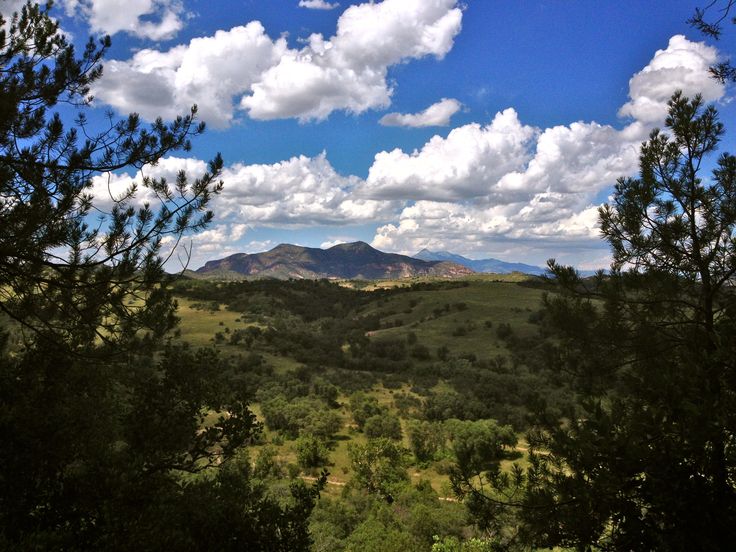
By Wendy Russell
The Patagonia Area Resource Alliance and Earthworks are working together to analyze AZ Mining Inc / Wildcat Silver’s Hermosa open pit mine plans so that our community can better understand its likely impacts. Earthworks is a national non-profit organization dedicated to protecting communities and the environment from the impacts of irresponsible mineral and energy development while seeking sustainable solutions. Earthworks stands for clean water, healthy communities and corporate accountability.
By reading reports that AZ Mining Inc / Wildcat Silver has recently released to investors which contain detailed information about its mining plans in the Patagonia Mountains, one can understand the purposes behind its current drilling exploration proposal of “drilling 24 geotechnical boreholes, 10 exploration boreholes and 12 hydrogeologic boreholes / monitoring wells, and excavating 16 test pits.” Spoiler alert: the sole purpose of the drilling proposal is to advance an open pit mine plan.
One purpose of the monitoring wells, as described in a January 2014 AZ Mining Inc /Wildcat Silver report, is to help “determine the quantity, location and pumping rates required to dewater the pit.” By the second year of mining,AZ Mining Inc / Wildcat Silver’s open pit would go below the water table, and water would be seeping into the pit. In order to mine,AZ Mining Inc / Wildcat Silver would have to continuously pump out this groundwater. The study says, “This creates a cone of depression around the pit allowing mining to take place.” What the report does not say is that this “cone of depression” will lower groundwater levels of the broader landscape. A rough calculation of groundwater pumping required by the mine would be 670 million gallons of water annually. To put this in perspective, the groundwater level for the town of Patagonia has already dropped nearly 18 feet since 2008, and the town uses approximately 42 million gallons per year. Wildcat’s mining would require 15 times that amount.
The geotechnical exploration that is slated to occur primarily in Corral Canyon and Goldbaum Canyon is also for AZ Mining Inc / Wildcat Silver’s open pit mine plans. Corral Canyon is described in AZ Mining Inc /Wildcat Silver’s report as “an optimal location for siting the TSF [Tailings Storage Facility]. Tailings typically contain dangerous chemicals, including arsenic, lead, mercury, and processing chemicals like acids and cyanide. AZ Mining Inc / Wildcat Silver notes that Corral Canyon is “at the top of the watershed.” It is also the top of the Patagonia Municipal Supply Watershed, the sole source of drinking water for the town of Patagonia and an additional 300 area wells.

Corral Canyon in the Patagonia Mountains, proposed site for AZ Mining Inc / Wildcat Silver’s mine tailings piles.
AZ Mining Inc /
Goldbaum Canyon is the planned location for AZ Mining Inc / Wildcat Silver’s Waste Rock Storage Facility. Waste rock is rock that does not contain desired minerals. It often contains iron, which can transform to produce acid run-off when exposed to air and water. This phenomenon is known as acid drainage. Acid drainage is irreversible and is already an ongoing issue from historic mines in the Patagonia Mountains.
The 10 exploration holes proposed in the current drilling plan, whose purpose is to prove the extent of the silver deposits, are essentially the same exploration holes AZ Mining Inc / Wildcat Silver proposed in 2011 but withdrew when PARA, Defenders of Wildlife, and Sky Island Alliance sued the Forest Service over its approval of Wildcat’s plans.
By reading AZ Mining Inc / Wildcat Silver’s reports to investors, it becomes clear that the only purpose of the Hermosa drilling proposal is to further develop an open pit mine plan. It is most certainly not a water study done for the benefit of the Town of Patagonia–a concocted assertion put forward by supporters of the mine. A peer-reviewed study of AZ Mining Inc / Wildcat Silver’s mine plan being prepared by PARA and Earthworks will provide the facts and detailed information on anticipated risks to our groundwater, the potential for acid drainage contamination, and heavy metals pollution, as well as the range of issues associated with air pollution, light and noise pollution.
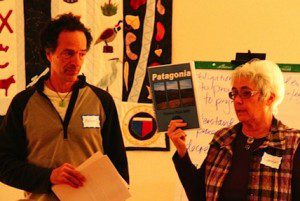
It’s hard to believe that the end of the year is approaching! When 2013 began your friends, neighbors, and colleagues here at the Patagonia Area Resource Alliance (PARA) were gearing up for a busy year promoting the incredible beauty, community and natural heritage of your Town of Patagonia and the Patagonia Mountains. Little did we know what a whirlwind this year would be! The past eleven months have seemingly sped by while we have been advocating to protect this amazing place that we all treasure from the multiple threats that exploratory drilling and mining pose to our small community.
PARA was formed in 2011 to educate and engage the community about the risks and realities of mining, to promote local sustainable economies like ecotourism, to better understand our precious and imperiled natural resources such as clean water and wildlife, and to actively advocate for the protection of those resources in concert with Patagonia’s distinct and serene rural way of life.
You have helped us along the way this year! You have volunteered, come to public meetings, wrote letters to elected and appointed officials; you have taken a class to learn more about the wildlife in our midst and asked poignant questions about the future of our community. Together, we have contributed over 5000 volunteer hours already in 2013!
It has been an amazing and transforming year for PARA, but we have so much more to do! PARA runs on a shoestring budget with the human power of an almost entirely volunteer workforce and just one part-time, coordinator. We’d like to do so much more! Please consider making a donation to PARA this year to support and grow this critical work in our community.
Educating the Community, Empowering Ourselves
With a grant awarded from Patagonia® Inc, PARA and Sky Island Alliance (SIA) co-hosted an Advocacy workshop for area residents with national expert Dinah Bear on the National Environmental Policy Act (NEPA). We put on two additional NEPA environmental impact scoping comment workshops on mining proposals and held four more letter writing sessions. The PARA Board also participated in our own workshops with SIA Executive Director, Melanie Emerson. Read more…
Documenting Patagonia’s Natural History
We hosted a BioBlitz in the Patagonia Mountains with Dr. Tom Van Devender of SIA and scientists from all over the Southwest. 418 different species of plants and animals were documented in one weekend–including a new American record of the Willowleaf Oak (Quercus viminea). Results are being used to protect species and habitats imperiled by mining and drilling proposals and can be viewed online at www.madrean.org. Read more…
Advocating for Protection Through Tireless Outreach
PARA steadfastly engages elected officials and national organizations regarding the perils that Patagonia faces with proposed mining. This year we conducted tours of proposed mine sites to representatives from the U.S. Senate, Defenders of Wildlife, EARTHWORKS, TrekWest and the media. We remain dogged in our outreach to get and keep attention focused here. Read more…
Ensuring Agencies’ Due Diligence
We successfully made the case that the NEPA scoping period for Regal Resources mineral drilling proposal in Humboldt Canyon be re-opened. PARA advocated and reasoned with the District Ranger of the US Forest Service that NEPA decisions should be made using current rather than outdated information. He concurred and ultimately gave us all two additional years to prepare data for more comprehensive scoping comments that can accurately articulate the broadest range of potential impacts. Read more…
To learn more about our 2013 accomplishments and efforts, please take a look at PARA’s “Report to the Community” available on our website at: www.patagoniaalliance.org/our-activities-outreach/
Unceasing Protection of the Patagonia Mountains.
With continued legal assistance from Defenders of Wildlife, PARA strives to hold mining companies, the US Forest Service and all agencies accountable to follow the laws and regulations designed to protect our water, air, surrounding ecosystems and communities. We are positioned to respond to future public scoping notices for exploratory mining proposals scheduled for the Patagonia Mountains.
Sustaining Wildlife Data Documentation and Collaborations
Citizen scientists from the Town of Patagonia continue wildlife monitoring efforts in the Patagonia Mountains focusing on areas immediately at risk by proposed mining activities. Data gathered is used to fight mining proposals through species lists, presence of vulnerable species and habitat analysis. Additional collaborations are ongoing with Defenders of Wildlife, EARTHWORKS, Sky Island Alliance and others to ensure this data is applied to advocacy efforts in the most effective ways.
Increasing Our Outreach for 2014
PARA is strategizing to expand community education activities to grow our base of support and empower concerned residents with potential actions to keep mining out of the Patagonia Mountains. We recognize the need to establish sustainable funding to maintain core functions and seek to expand funding sources. Receiving our own 501(c)(3) non-profit status was just the first step. With additional staff funding in the 2014 budget, we plan to add members to our team to continue to expand our outreach beyond our community boundaries. Our 2013 Financial Report is also available online: www.patagoniaalliance.org/our-activities-outreach/
For A Thriving Community in 2014 and beyond
PARA recognizes that the health and economic prosperity of our community are deeply connected to the wellbeing of the Patagonia Mountains and the Harshaw/Sonoita Creek watershed. They are the source of our drinking water, clean air and the centerpiece for the tourism that drives our local economy.
There are many needs in our community and many compelling requests for support. We believe one of the most fundamental is protecting our drinking water and our community from the well-known detrimental effects of open pit mining. To that end, PARA is seeking to raise $19,000 by the end of 2013 to support the several ongoing and new initiatives outlined above as we move into 2014. We are fortunate to have a group of amazingly committed community members and generous donors supporting our work, but we are looking to broaden the base of support to ensure not only financial sustainability, but also the ability to impact local, regional and national decision-making on our own behalf. That’s where you come in. The work necessary to make this vision of 2014 a reality is possible only because of your time and your financial support. Please make a gift today.
Please donate to PARA securely online at: www.patagoniaalliance.org/donations/
Every single contribution makes a sizable difference to our organization and ultimately for our community. It is only because of the generous support from people like you that we can undertake this critical work. Thank you!
Your PARA Board and Coordinator
Carolyn Shafer, Cliff Hirsch, Gooch Goodwin, Joseph Nitsche, Katie Flemming-Ballard, Lee Rogers, Michael Stabile and Wendy Russell

 With the Summer Rain season in full swing, it’s easy to forget that we live in the desert. It’s also easy to forget that we are in a long-term drought. There have been two recent stories in the news about our strained water resources. Both stories discuss water flow in nearby Cienega Creek. KVOA offers NASA images capture Tucson – then and now. The Arizona Daily Star has an article called Cienega Creek, other S. AZ. streams, increasingly dry.
With the Summer Rain season in full swing, it’s easy to forget that we live in the desert. It’s also easy to forget that we are in a long-term drought. There have been two recent stories in the news about our strained water resources. Both stories discuss water flow in nearby Cienega Creek. KVOA offers NASA images capture Tucson – then and now. The Arizona Daily Star has an article called Cienega Creek, other S. AZ. streams, increasingly dry.
The drought raises questions. The biggest one is how in the world can we support mining in the Santa Rita and Patagonia Mountains given the huge amounts of water they consume? Rosemont’s supposed solution is using CAP water to recharge the aquifer. Whether it can be done and whether it will help is debatable. Regardless, Rosemont Copper can pump all the groundwater they want without the CAP recharge.
There are four other mining companies doing mineral explorations in the Patagonia Mountains. Arizona Mining Inc (Wildcat Silver), the one furthest along, estimated that their planned open pit mine would consume roughly 700,000 gallons of water per day. Per day! For comparison, the maximum pumping capacity of the Town of Patagonia’s well water is 110,000 gallons per day. Don’t forget the 3 other international mining companies that want to mine in the Patagonia Mountains. Using the figure of 700,000 gallons of water per day per mine results in 2.8 million gallons of water used per day. Big numbers need perspective.
Because all water sites seem to deal in acre feet, let’s do comparisons in those figures. 2.8 million gallons equals 8.6 acre feet. Estimated water usage from four mines per year using Arizona Mining Inc’s (Wildcat Silver) numbers comes out to 3,139 acre feet. The Santa Cruz Active Management Municipal Areas which includes Nogales, Rio Rico, Tubac, Arivaca, uses 7800 acre feet of water per year. That does not include Patagonia, Sonoita or Elgin. Mining in the Patagonia Mountains could potentially use almost half of all the water used annually in the most populated cities in Santa Cruz County.
Do we even have that much water? Is this drought the new normal?
Sources:
An Investigation of Energy Use, Water Supply and Wastewater Treatment at Patagonia, Arizona
Dear Ms. Bush,
The Patagonia Area Resource Alliance was horribly disappointed with your editorial for Tucson KOLD News, “Time to end fight, start mining”.
We don’t consider actions of the opposition to the proposed Rosemont Mine as fighting. This mine would have a permanent impact on the area’s water supply, ecosystem, landscape and residents. We, the public, are entitled to a thorough analysis of the potential impacts of the proposed mine as accorded to us by the National Environmental Policy Act. When governing agencies fail to follow the rules as dictated by NEPA, lawsuits are often the only tool available to get compliance. Public lands belong to everyone, and we have a legal right to a transparent and thorough review of projects proposed on our public land. Don’t deny us our due process.
Arizona was traditionally a mining state, but mining has been replaced by the tourism, aerospace, and micro-electronics industries as our top revenue producers. Also consider that the revenue generated by mining is closely followed by that generated through agriculture/food production. Mining is no longer the primary driving economic force of Arizona. The Arizona Office of Tourism commissioned a ten year study that showed total direct travel spending in Arizona in 2008 was $18.5 billion with $1.4 billion in state and local tax revenues and $1.2 billion in federal tax revenues. These revenues are most important to rural areas like Sonoita. Can we afford to jeopardize our largest economic driver and greatest source of tax revenue?
Also note that a study commissioned by the Western Governors’ Association showed that outdoor recreation is a $646 billion national industry and in the Western States, it’s a $256 billion industry. Why not promote outdoor recreation in the Santa Rita Mountains? It’s sustainable; compatible with the current ranching and farming economy; and far less harmful to the water supply and ecology.
Arizona currently has enough operating copper mines to meet demand. These mines currently have hundreds of unfilled job openings implying that they are not even operating at full production. If current mines are unable to find sufficient workforce in Arizona, where is Rosemont Copper going to get their workers? The jobs they promise will have to be filled by an imported workforce. How does that benefit the unemployment rate in Arizona?
The Rosemont Mine has a projected life-span of approximately 20 years and will result in permanent damage to the Rosemont Valley and surrounding ecosystem. We need visionaries willing to look at the bigger picture and willing to move forward with what is going to benefit the most people for the longest period of time. The proposed Rosemont Mine does not fit that bill. Pushing it forward for the sake of short-term jobs denies the area of the much greater potential economic benefits of promoting industries such as ranching, food & wine production, outdoor recreation and tourism. We ask that you reconsider your position and promote a more sustainable and beneficial economic future for all Arizonans.
Sincerely,
Wendy Russell
Patagonia Area Resource Alliance
If you’d like to record a rebuttal to the KOLD editorial, e-mail Debbie Bush at dbush@TucsonNewsNow.com
Tombstone Arizona has made national headlines regarding its battle with the Forest Service over water rights. For 130 years pipelines have transported water from the Huachuaca Mountains 26 miles to Tombstone. The Monument Fire and subsequent mud slides last year destroyed this pipeline system. Tombstone has been trying to get emergency permission from the Sierra Vista District of the Coronado National Forest to bring in heavy equipment to repair the water system without success. The case has also gone to court, twice. Tombstone has lost both times.
Reasons given by the courts include the question of actual need and urgency of the repairs. Also in question is Tombstone’s entitlement to the water in the national forest. Tombstone claims rights to 25 springs while the Forest Service says they have permits for only 5. The federal government said none of that gives the city unfettered right of access. The Forest Service has also cited the Wilderness Protection Act as a reason for their reluctance to allow the requested repair of the pipeline. Machinery of any kind is banned in a Wilderness Area where the pipeline is located.
Another reason given was the presence of Mexican spotted owls. The owls are a threatened species. Supposedly, their presence is the big reason that the Forest Service wouldn’t grant Tombstone a permit to use heavy equipment to fix the pipeline. I have a hard time believing that one.
Here in the Patagonia Mountains we are lucky to still have Mexican spotted owls. Last year, the Sierra Vista District of the Coronado National Forest granted permission to Arizona Minerals aka Wildcat Silver to start exploratory drilling operations within Mexican spotted owl habitat. This drilling project would have operated 24 hours a day, 7 days a week, for 300 consecutive days. Along with noise and light disturbance there was the extremely high likelihood of destruction of owl habitat. Even the presence of a nearby federally-designated Mexican spotted owl Protected Activity Center didn’t block the approval of the drilling project. We, along with the Defenders of Wildlife and Sky Island Alliance had to sue the Forest Service to stop the drilling project.
It’s not just about the owls. The bigger question is how does the exact same Forest Service office come up with completely opposite policy actions?
U.S. high court denies Tombstone water relief
Sierra Vista Herald Sat, 06/02/2012
Tombstone readies picks and shovels
Sierra Vista Herald 06/07/2012
Spotted owl could be game-changer in Tombstone water war
CNN 06/09/2012

Masquerading as a bill about “strategic and critical minerals,” HR 4402 takes the nation’s top toxic polluter, the hardrock mining industry, and strips away key protections for public health, water and communities.
The current law that governs hardrock mining on public lands already allows for open access to mineral resources – for free. Under the 1872 Mining Law, gold, copper, silver and uranium are mined by multinational corporations without any return to the owner of the mineral, the taxpayer. Mining is also considered the “highest and best use” of public lands. As such, federal land managers cannot, and do not, deny mine proposals. In addition to the inadequacies of this antiquated law, the mining industry is also exempt from key provisions of some of our most important environmental laws, like the Clean Water Act.
HR 4402 makes the current environmental threats posed by hardrock mining worse. By truncating the permitting process and effectively eliminating meaningful environmental review, this legislation threatens water resources across the United States and limits the ability of mining-impacted communities to protect their land, water and health.
Mining at Any Cost
This bill allows federal agencies to exempt mining projects from review under the National Environmental Policy Act of 1969 (NEPA). NEPA makes sure that in addition to government and industry input, everyday citizens can take part in the development and oversight of projects that affect our social, economic, and environmental health.
This legislation would run roughshod over the values of transparency and public participation that are at the heart of NEPA, the process that has allowed us to find out one of the most disturbing statistics about the nature of hardrock mines: 75% of them end up polluting surrounding surface or groundwater, in spite of this environmental review.
HR 4402 caps the length of the permit process to just 30 months and allows regulators to exempt mining projects from the Equal Access to Justice Act (EAJA) as well. EAJA is legislation that makes nonprofit environmental law firms possible, which allows average Americans to protect their communities and families from pollution. Impacted communities often cannot afford lawyers, much less the litany of scientific and technical experts needed to mount a serious challenge to a multinational mining company.
A Better Way
Disenfranchising rural communities and polluting western waters is not a solution. In addition to research on recycling and alternative, sustainable sources for metals, 1872 Mining Law reform is needed to protect some of our most precious resources. HR 4402 takes us in the wrong direction. The hardrock mining industry should be clamoring to lead the world in better mining practices, not catering to the lowest common denominator.